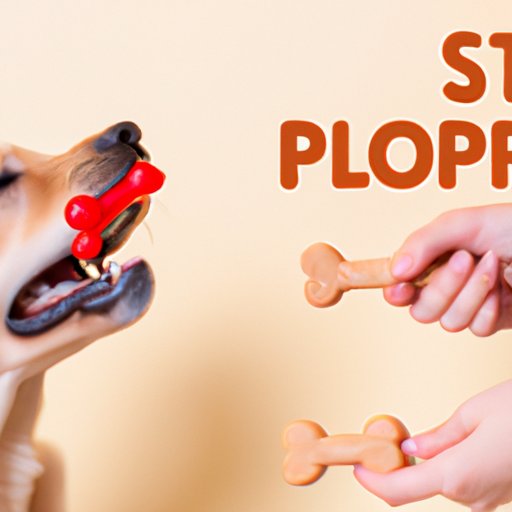I. Introduction
Adding a new puppy to the family is an exciting time, but it also comes with its challenges. One of the most common issues new puppy owners face is puppy biting. Puppies tend to nip and bite on things, including fingers, toes, and clothing. While biting is a natural behavior for puppies, it can be problematic if left unchecked. This article will provide you with methods to stop puppy biting, including training techniques, chew toys, and patience.
II. Understanding the Reasons Behind Puppy Biting
Puppies explore the world around them using their mouths, and biting is one way they learn about their environment. Puppies also bite when teething, which can be painful for them. Moreover, the biting may be a form of play and a way of getting your attention. It is important to understand these reasons behind puppy biting to tackle the behavior successfully.
III. Training Methods to Stop Puppy Biting
Training is a crucial aspect in stopping a puppy’s biting behavior. Positive reinforcement and redirection are two of the most effective training methods to stop puppy biting. Positive reinforcement involves rewarding good behavior, while redirection involves giving your puppy another activity to do, such as playing with a chew toy.
IV. Providing Chew Toys to Your Puppy
Puppies have a natural urge to chew, and providing them with appropriate chew toys can help redirect biting behavior. When selecting toys, choose those that cannot be easily destroyed or swallowed and have no small parts. Encourage your puppy to use the toys by showing them and playing together.
V. Time-Outs and Rewards
Another solution to stop puppy biting is using time-outs and rewards. Time-outs involve removing your attention from your puppy and ignoring them for a short period, while rewards involve praising and rewarding your puppy when they stop biting. It is essential to use these methods consistently and fairly to help your puppy learn to stop biting and focus on positive behavior instead.
VI. Consistency is Key
When it comes to training your puppy not to bite, consistency is vital. Everyone in the family who interacts with the puppy should use the same training techniques to prevent confusion or mixed signals for the puppy. This will ensure that the puppy understands what is expected of them and quickly learns the desired behavior.
VII. Patience and Persistence
Biting behavior is a natural behavior for puppies, and it takes patience and persistence to correct. It is essential to remember that retraining a puppy is a process that takes time. Be patient with your puppy, show them love and affection, and remember that consistency is the key. With time, a puppy’s biting behavior can be corrected.
VIII. Seeking Professional Help
If you have tried all the methods provided and your puppy’s biting behavior is still an issue, it may be time to seek professional help. A professional dog trainer or behaviorist can provide one-on-one training to help correct your puppy’s biting behavior and provide you with customized advice for your puppy.
IX. Conclusion
Stopping puppy biting requires patience, consistency, and persistence. Providing your puppy with chew toys, positive reinforcement, and redirection, along with time-outs and rewards, can improve biting behavior. Remember that seeking professional help can be an option if your puppy’s behavior still needs improvement. By following the methods provided, with love and patience, your puppy will learn to stop biting and grow to be a well-behaved dog.
